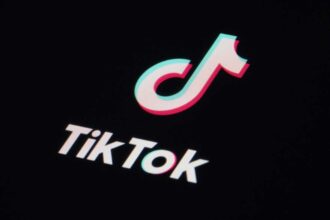Every minute, your audience is bombarded with information, choices, and fleeting trends.
So, how do you capture attention, build trust, and ensure your business doesn’t just survive, but thrives for the long haul?
The secret lies in mastering two powerful, intertwined forces: Brand Image Marketing and Customer Satisfaction.
While they might seem like distinct strategies, in 2025, they are two sides of the same coin, each directly influencing the other.
As industry insights have consistently shown, a company rarely achieves enduring success without seamlessly blending these vital ingredients.
Ready to understand this crucial relationship and discover how to optimize your strategy for a future of loyal customers and a powerful brand presence? Let’s dive in!
Beyond the Surface: Why Brand Image & Customer Satisfaction Are Inseparable
Gone are the days when superficial marketing tactics were enough. We live in a truly digital world where information spreads instantly, and customer voices resonate louder than ever.
READ ALSO: Unleash Potential: How Generative AI Transforms Consumer Marketing in 2025!
In this landscape, customer satisfaction isn’t just a goal; it’s a direct consequence of how effectively you manage your brand image marketing.
Businesses that fail to recognize this symbiotic relationship risk losing attention, trust, and ultimately, market share. For genuine longevity, both aspects must be considered equally vital.
Decoding the Duo: What Do They Truly Mean?
Before we explore their powerful connection, let’s clarify these fundamental terms:
What Is Brand Image Marketing?
This isn’t just about your company’s internal vision for itself. While a business may have aspirations for its brand, Brand Image Marketing is specifically designed to shape how audiences perceive that brand.
READ ALSO: Unleash Potential: How Generative AI Transforms Consumer Marketing in 2025!
It’s about fueling certain sentiments, crafting a set personality, and creating a desired perception in the minds of your target consumers.
The interesting challenge here is that perceptions can vary widely; individuals consume content differently and hold diverse ideologies. Your marketing efforts aim to boost the likelihood that your audience perceives your brand in the way you intend.
What Is Customer Satisfaction?
At its core, Customer Satisfaction is the ultimate objective of almost every marketing strategy. Customers have always been, and rightly remain, the nucleus of any flourishing business.
They hold the power to elevate a brand to widespread recognition or lead to its complete obsolescence.
Therefore, brands are relentlessly focused on providing a satisfying experience. In an economy characterized by constant change and evolving customer needs, even a single misstep in Brand Image Marketing can quickly erode customer satisfaction. This necessitates a continuous reimagination of how to offer genuinely satisfying experiences.
The Seamless Union: How Brand Image Fuels Satisfaction (and Vice Versa)
Historically, these two factors were often managed in silos. However, the digital revolution has compelled marketers to integrate them for stellar results.
The first step towards impactful Brand Image Marketing is to approach it with Customer Satisfaction as its holistic foundation.
Your brand’s image must be built squarely on understanding and anticipating customer needs and expectations.
When Brand Image Marketing and Customer Satisfaction unite, they unlock incredible doors of success.
A powerful emerging facet of this concept highlights marketing centered on social causes. Today’s audiences are “woke” and progressive; they demand authenticity and purpose beyond average content. Brands must reimagine their strategies to provide satisfaction that resonates on a deeper, values-driven level.
Top Trends In Brand Image Marketing (for 2025 and Beyond)
To cultivate a compelling image that resonates with modern consumers, consider these leading trends:
- Going Back To A Celebrated Era (Nostalgia Marketing): This is a superb strategy for established companies with room to experiment. When facing a plateau in marketing impact, evoking nostalgia can powerfully re-engage customer interest. McDonald’s, for instance, brilliantly leveraged this by launching vintage Happy Meals for adults, triggering widespread emotional appeal and garnering immense popularity.
- Visual Branding Dominance: In 2025, if it’s not visual, it’s easily missed. Customers are more inclined to be visually pleased than to scroll through wordy posts. Short-form videos and reels have gained monumental viewership, making them essential channels for brands. Playing with quirky colors and effects in video content piques interest and makes a stronger mental impact, directly influencing purchase decisions.
- Repurposing Content for Max Impact: Smart brands understand that tons of money and resources go into creating marketing plans. Instead of letting strategies gather dust in the backlog, repurposing existing, high-performing content for new formats or platforms is taking center stage. This stellar trend maximizes ROI and ensures your valuable content resonates with new audiences.
Key Trends Driving Customer Satisfaction (in the Digital Age)
Ensuring your customers are genuinely happy is paramount. Here’s how leading brands are achieving it:
- Hyper-Personalization: When customers feel catered to in a personalized way, it reflects genuine concern and appreciation for their support. Marketers can now leverage data to study audience behaviors and provide tailored experiences. This makes customers stick to the brand, even amidst economic fluctuations, transforming them into avid supporters.
- Strategic Email Marketing: While considered “traditional” by some, email marketing remains incredibly effective, especially as an extension of personalization. Companies can send targeted emails to loyal customers, expressing appreciation and including exclusive discounts or offers. These redeemable benefits make customers feel acknowledged and valued, strengthening loyalty.
- Bringing Customer Reviews To The Forefront: This age is all about making customers a visible part of the product journey. Brands are shifting focus to actively solicit and prominently display authentic customer reviews. This boosts transparency, builds trust, and encourages more customers to pitch in. Consequently, reviews open doors for in-depth discussions, raise engagement rates, and drive more traffic – a complete win-win!
The Undeniable Link: Will Brand Image Marketing Always Lead to Customer Satisfaction?
The answer is a resounding yes, if the former is executed superbly! This integrated approach is a double-edged sword: a meticulously crafted brand image, when aligned with genuine customer needs, inevitably leads to positive customer perception and satisfaction.
Brands cannot unilaterally choose how they are perceived; it is always the customers who ultimately form a positive perception, especially after being satisfied with the company on all fronts.
This holistic approach is unique, powerful, and capable of reaping countless benefits, from increased sales to invaluable customer retention.
In 2025 and for years to come, the synergy between a strong brand image and stellar customer satisfaction will remain the cornerstone of lasting business success.






